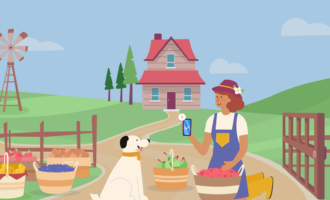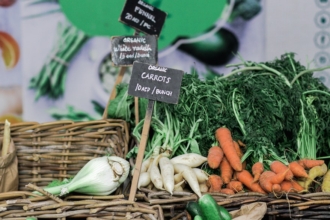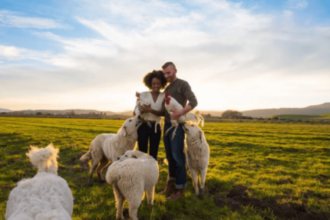The basic model of community-supported agriculture, or CSA, is fairly simple. CSA members pay a flat fee for a “share” of an upcoming harvest. The farmer or homesteader uses this money to pay for the costs of planting and raising the crop. When the farmers harvest their crop, members receive their respective shares.
“A CSA program is a form of direct marketing from farm to consumer that has countless benefits on both sides of the equation,” writes Kristen Ploetz at Modern Farmer. As with any new venture, however, a CSA can pose risks as well. Addressing a few key topics when starting a CSA can help ensure the operation is a success.
Creating a CSA agreement
As with any business venture, a CSA can open participants to legal liability. For example, farms will need to comply with federal, state, and local standards for safe food handling. They may also need to consider purchasing insurance to cover certain circumstances — like a member becoming ill from eating the CSA’s food or injuring themselves when they pick up their share.
A CSA agreement can help clarify the terms of the relationship between farmer and member, including payment terms and certain liability issues, says attorney Cari Rincker. The contract covers the basics of the arrangement between the grower and member. Rincker recommends that a CSA agreement address the following points at minimum:
- The length of the growing season
- Which products the member’s share includes
- Whether each member will receive a guaranteed minimum amount of food for their share
The agreement can explore a number of other details as well, like who bears the risk of a failed crop, where food delivery or drop-off locations will be, and how the CSA will communicate with members in the event of an emergency or unforeseen calamity.
Reaching new members
The purpose of a CSA is to get fresh produce into the hands of paying customers. As a result, a CSA’s efforts to reach new members can make or break its early efforts.
Today, many interested consumers look for CSA information online. Both the U.S. Department of Agriculture’s CSA Directory and the website Localharvest.org collect information on CSAs for potential members, writes Ocean Robbins, CEO at Food Revolution Network.
The COVID-19 pandemic has pushed potential CSA members online, and it’s moving farmers there as well. “With COVID-19, we’ve seen this wave of producers who needed to be online lose their distribution channels to wholesale customers. So suddenly, they need to figure out how to get their product to the customer,” says Kami Semick, cofounder of Food4All, an online hub connecting farmers and customers.
A digital environment can be perfect for reaching new customers. CSAs can use existing sites to spread the word about their operations and various digital tools to gauge interest and gather information to plan their growing seasons.
CSAs can also start their own websites to market their offerings as well as to track interest from customers. Adding online interest and membership forms to their websites allows people to sign up for memberships online, describe the types of crops and how much food they’re seeking, and provide other forms of feedback to the CSA. The CSA can, in turn, use this information to fine-tune its operations.
Building relationships
Digital tools, like online polls and forms, are a great way to connect with potential and current CSA members — especially in the midst of a pandemic. Such connections are proving to be essential for both farmers and CSA members during difficult times.
In early 2020, economic slowdowns, closed businesses, and shelter-in-place orders changed the shape of food demand in the United States nearly overnight. Farms that relied on wholesale orders found themselves struggling — while CSAs discovered they couldn’t keep up with demand.
For example, when California officials issued a shelter-in-place order for the Bay Area in March 2020, California CSA Eatwell Farm saw its CSA sales jump by 50 percent in just a few days, says the farm’s owner, Lorraine Walker. They paused new CSA subscriptions not long after.
Approaching a CSA as an exercise in building relationships not only helps the business grow but also provides more satisfaction to members and farmers. “Enjoy the connection that you have with the people who are buying what you’re growing. It’s not going to be all sunshine and rainbows sometimes, but people really do like that connection,” says Sarah Ward, owner of Oasis Springs Farm in Nashua, New Hampshire.
By planning for foreseeable risks, embracing technology, and focusing on relationships, a new CSA can provide economic stability for farmers and fresh, local nutrition for members — improving the lives of both through stronger relationships.


































































Send Comment: